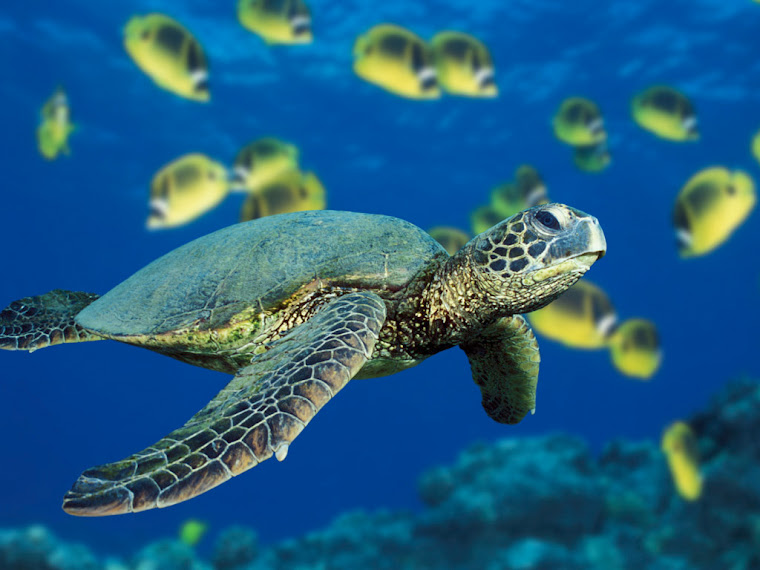"Mariana Common Moorhen / Gallinula chloropus guami / Pulattat "-->The Mariana Common Moorhen, also known in the native language as Pulattat, is the only remaining wetland bird species in the Mariana Islands. The distinguishing physical characteristics of adult birds include a red bill and frontal shield, white undertail coverts, a white line along the flank, and long olive-green legs with large unwebbed feet. Males and females are nearly identical in appearance and are difficult to distinguish from each other. Moorhens in the Mariana Islands are found primarily at freshwater manmade and natural wetlands that are both seasonal and permanent. Occasionally, they are recorded in brackish water wetlands. Wetlands that support about equal amounts of emergent, submergent, and/or floating vegetation and open water are more suitable to moorhens for feeding, nesting, and loafing than wetlands that are predominately open water or that support mostly emergent wetland vegetation. In the Mariana Islands, moorhens have been recorded at golf course wetlands, commercial fish ponds, sewage treatment plants, wetlands created for the mitigation of wetland loss, but rarely at rivers and streams. Mariana Common Moorhens feed on a variety of plant and animal matter that may be located in the water, in and adjacent to wetland vegetation, and along the shoreline. Moorhens in the Mariana Islands move from seasonal to permanent wetlands during the dry season (January to April) and then move back to seasonal wetlands during the rainy season (July to November). They also fly between islands to utilize seasonal and permanent wetlands.http://www.fws.gov/pacificislands/wesa/moorehenmariaindex.html
***Compared to: "Micronesian Megapode / Megapodius laperouse / sasangat or sasangal"-->The Megapodiidae are part of a family within the order Galliformes (chicken-like birds) found only in the Australasian region. The family is comprised of seven genera found in Australasia (Australia, New Guinea and surrounding islands, eastern Indonesia, the Nicobar Islands, the Philippines, Micronesia, Vanuatu, and Niuafo`ou of the Tonga Islands). The Micronesian Megapode is generally a bird of the forest. The Micronesian Megapode is a pigeon-sized bird with an average weight of about 12.25 ounces (3.8 grams). It has a dark gray-brown to black body plumage and an ash gray head with a slightly darker, short, rough crest. The flight feathers and short tail are grayish-black, and the wings are short and round. The bill is yellow with the upper mandible clove-brown to black at the base. The feathers around the eye, ear, and throat are very sparse or absent revealing red skin and a red throat patch. The heavily built legs and feet are yellow with the joints of toes and/or all the upper surface dark gray-black. Megapodes are sometimes called “incubator birds” because they rely on solar energy, volcanic activity, or microbial decomposition as a heat source for incubation. They are also characterized by laying large eggs without an air chamber. Chicks lack an egg tooth at hatching and kick their way out of the egg. Megapode chicks are precocial (feathered, able to walk, and able to regulate their body temperature) at hatching and the adults do not care for the young. The Micronesian Megapode seems to be an omnivore, taking a variety of plant and animal foods available on the forest floor, including seeds, beetles, ants, other insects, and plant matter. http://www.fws.gov/pacificislands/wesa/megapodeindex.html~Describe at least 4 adaptations for each animal and contrast these adaptations to animals of the same class on land. How is the physiology different between the animal and another from the same class on land?-->The Mariana Common Moorhen, or also known as Pulattat, and the Micronesian Megapode both belong to the class aves. Class aves (birds) are bipedal, warm-blooded, egg-laying vertebrate animals. Yet, their way of living differs in many ways. For instance, the pulattats are known to be found primarily at freshwater manmade and natural wetlands. Occasionally, they are recorded in brackish water wetlands. And the Micronesian Megapode are generally known as a bird of the forest. Both birds feed on a variety of plants and animals. But the pulattats commonly feed on plants and animals that may be located in the water, in and adjacent to wetland vegetation, and along the shoreline. While the Micronesian Megapode feed on what is available on the forest floor, including seeds, beetles, ants, other insects, and plant matter.
Subscribe to:
Post Comments (Atom)


No comments:
Post a Comment